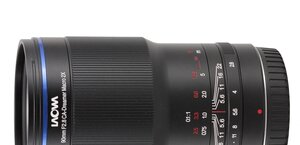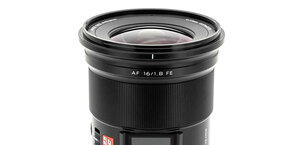Nikon Nikkor AF-S 500 mm f/5.6E PF ED VR
1. Introduction

It is a comparison between a Fresnel element (on the left) and a traditional element (on the right) of the same optical power. A huge difference in the amount of glass necessary to construct them sticks out at once. Small wonder lenses employing the new technology can be physically much lighter than traditional devices. Of course the weight is just one part of the issue. Thick elements mean problems with chromatic aberration and losses of light due to glass absorption. Fresnel elements allow you to avoid these so you can construct a small, lightweight lens with a big focal length and good correction of chromatic aberration.
Please Support UsIf you enjoy our reviews and articles, and you want us to continue our work please, support our website by donating through PayPal. The funds are going to be used for paying our editorial team, renting servers, and equipping our testing studio; only that way we will be able to continue providing you interesting content for free. |
- - - - - - - - - - - - - - - - - - - - - - - - - - - - - - - - - - - - - - - - - - - - - - - -
A diagram taken from the official Nikon website shows that a Fresnel element joined with a normal one can eliminate efficiently chromatic aberration. A reverted order of focusing particular light wavelengths in the Fresnel element when compared to a classic element is especially worth your attention. When you combine both these elements mutual compensation might reduce that aberration to a really small level.
 |
What is the main difference between Canon and Nikon technology? Canon never uses words ‘Fresnel element’ but they call their technology ‘Diffractive Optics’. It is in full accordance with the actual state of things. The height and pitch of concentric grating in the shape of optical elements showed in Canon diagrams have indeed the same size as the wavelength of falling light. As a result you deal not with refraction but diffraction. That’s why the official Canon materials never employ a term ‘Fresnel element’, only ‘Diffractive Optics’.
In the case of Nikon you deal with a classic Fresnel – its small concentric sections are visible under microscope and they cause refraction, not diffraction of light. Meanwhile in August 2018 we saw another PF lens, this time a 500 mm f/5.6 instrument. Courtesy of the Nikon company we managed to borrow it really quickly, test it thoroughly and now we can present our impressions – enjoy!
You are also invited to get acquainted with our test procedure, described in the article "How do we test lenses?" If you feel it’s still not enough, please go to our FAQ section where you can find some further explanation.
 |
 |







